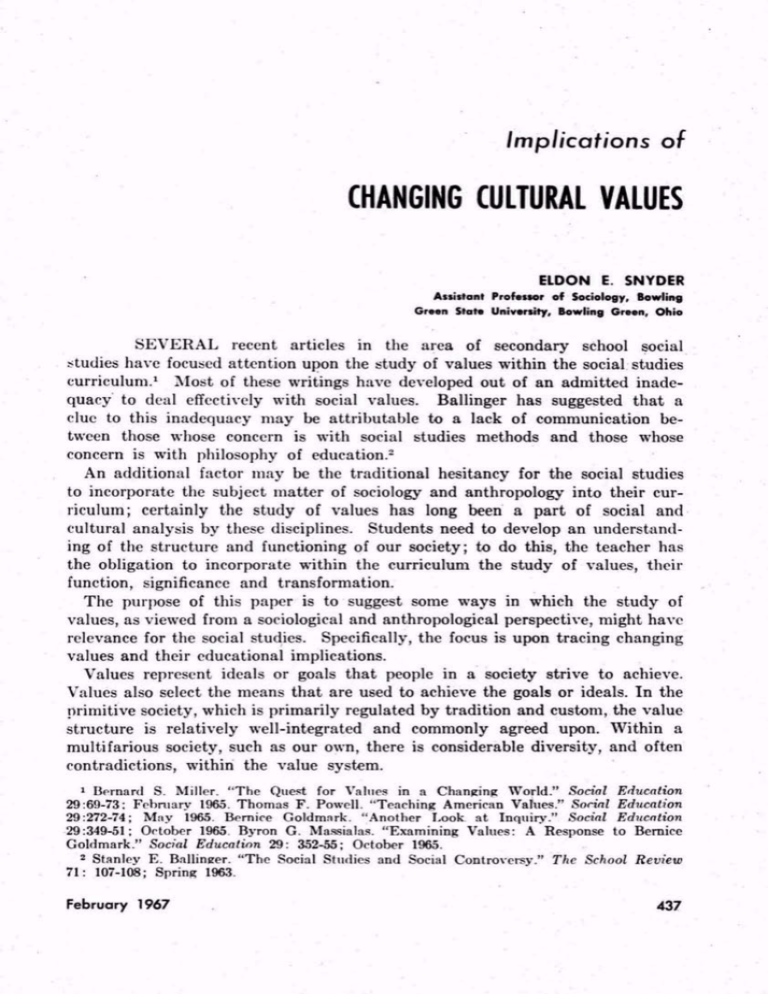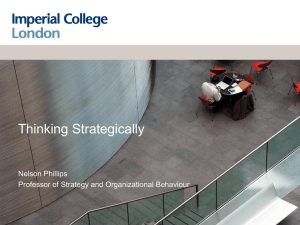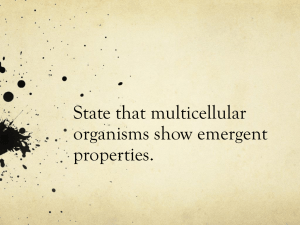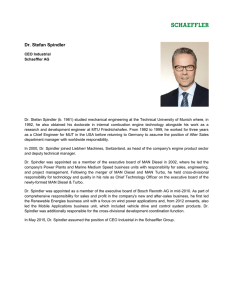
Implications of
CHANGING CULTURAL VALUES
ELDON E. SNYDER
•
. "
Assistant Professor of Sociology, Bowling
Green State University, Bowling Green, Ohio
SEVERAL recent articles in the area of secondary school social
studies have focused attention upon the study of values within the social studies
curriculum. 1 Most of these writings have developed out of an admitted inade
quacy to deal effectively with social values. Ballinger has suggested that a
clue to this inadequacy may be attributable to a lack of communication be
tween those whose concern is with social studies methods and those whose
concern is with philosophy of education. 2
An additional factor may be the traditional hesitancy for the social studies
to incorporate the subject matter of sociology and anthropology into their cur
riculum; certainly the study of values has long been a part of social and
cultural analysis by these disciplines. Students need to develop an understand
ing of the structure and functioning of our society; to do this, the teacher has
the obligation to incorporate within the curriculum the study of values, their
function, significance and transformation.
The purpose of this paper is to suggest some ways in which the study of
values, as viewed from a sociological and anthropological perspective, might have
relevance for the social studies. Specifically, the focus is upon tracing changing
values and their educational implications.
Values represent ideals or goals that people in a society strive to achieve.
Values also select the means that are used to achieve the goals or ideals. In the
primitive society, which is primarily regulated by tradition and custom, the value
structure is relatively well-integrated and commonly agreed upon. Within a
multifarious society, such as our own, there is considerable diversity, and often
contradictions, within the value system.
1 Bprnard S. Miller. "The Quest for Values in a Changing World." Social Education
29:63-73: February 1965. Thomas F. Powell. "Teaching American Vahies." Social Education
29:272-74; Miiy 1965. Bernice Goldmnrk. "Another Look at Inquiry." Social Education
29:349-51; October 1965. Byron G. Massialas. "Examining Values: A Response to Bernice
Golclmark." Social Education 29: 352-55; October 1965.
2 Stanley E. Ballineer. "The Social Studies and Social Controversy." The School Review
71: 107-108; Spring 1963.
February 1967
.
'
437
For individuals within a society, values are internalized and become an in
tegral part of their behavior tendencies, including the possible contradictions.
Externally, from the standpoint of the society, values function as ideals that
orient the activities within and between the social institutions. Thus, to properly
understand the functioning of the family, or political, religious, economic, and
educational institutions within a society requires an analysis of social values.
A number of sociological and anthropological studies of the American society
might serve as a starting point for the study of values and their function
upon social relations and institutions within our society. Robert S. Lynd's
Knowledge for What? is a classic analysis of the American values system.*
Robin M. Williams in his A merican Society analyzes "Values and Beliefs in
American Society."4 Another classic study that emphasizes the contradictory
nature of our values is Read Bain's essay, "Our Schizoid Culture."5 Additional
suggestions include studies by Kluckhohn,6 Mead,7 and Riesman. 8
A Transformation in American Values
Basic to the understanding of values in our society is the notion of social
and cultural change. As a society undergoes transformation, e.g., rural to urban,
some changes will eventually take place in the value system, though the values
will not necessarily be influenced equally by this change. To gain the perspective
of changing social values is important to a more realistic understanding of the
structure and functioning of a society. To study the values of a society at a
given moment in time is similar to a still-life photograph. To sense the move
ment and change, along with the implications for the institutional structure
of a society, requires a focusing upon the shifts of values.
The anthropologist, George D. Spindler, has very convincingly characterized
the American core values as undergoing a shift from traditional to emergent
values. 9 The traditional values (as adopted) include:
(a) Puritan morality (thrift, self-denial, and sexual constraint)
(b) Work success ethic (success comes with hard work, anyone can get to the top
if he works hard enough, people who are not successful are lazy or stupid or both)
(c) Individualism (the importance and worth of the individual)
(d) Future-time orientation (time is valuable, denial of present wants for future
'
.
.
satisfactions).
' Robert S . Lynd. Knowledge for What? Princeton: Princeton University Press, 1939.
* Robin M. Williams. A merican Society. New York: Alfred A. Knopf, 1961. Chapter XI.
5 Read Bain. "Our Schizoid Culture." Sociology and Social Research 1 9: 266-76; JanuaryFebruary 1935.
'Clyde Klurkhohn. Mirror for Man. New York: McGraw-Hill Book Co., 1949.
r Margarrl Mead. A nd Keep Your Powder Dry. New York: William Morrow and
Company, 1942.
8 David Riesman, Nathan Glazer and Reuel Denney. The Lonely Crowd. New Haven:
Yale Univernty Press, 1950.
* George D. Spindler. Education and Culture. New York: Holt, Rinehart and Winston,
Copyright © 1963, p. 136-37.
438
.
Educational Leadership
The emergent values are:
(a) Sociability (the well-adjusted individual gets along well with others, there is a
suspicion of those who prefer solitary activities)
(b) Relativistic moral attitude (there are no absolutes in right and wrong, what is
moral depends upon the rights of others)
(c) Conformity to the group (everything should be done with regard for others and for
group harmony, one's behavior is determined by observing others)
(d) Hedonistic, present-time orientation lone should enjoy the present).
Spindler feels that many of the conflicts and disjunctions within the American
culture can be traced to the shift from traditional to emergent values. This
shift is far from complete and we still have a strong orientation to the tradi
tional values, but with urbanization, wars, depressions, external and internal
threats, the "tendencies in the emergent direction have gathered strength and
appear to be on the way towards becoming the dominant value system of Ameri
can culture." l n
The traditional-emergent values might be thought of as extremes on a con
tinuum; and individuals, groups and institutions hold both value systems concomitantly, yet they vary in their location on the transformation continuum.
Some individuals embrace with few reservations the traditional values, others
wholeheartedly accept the emergent values, but most people probably find them
selves holding to segments of both value systems, including the possible contra
dictions. Perhaps the distribution of people on the continuum line might be
thought of as a frequency curve, though the shape of the curve at the present
time is open to speculation. Presumably the shape is changing with increased
frequency moving toward the emergent values.
If the above description represents the general population, sub-populations
and groups would form smaller and overlapping curves along the continuum
line. Within institutions the modal tendency for subgroups would also vary
along the transformation line. For example, Spindler has suggested that the
groups of people concerned with the activities and policies within a school
might be distributed as follows (adapted): 11
•
Traditional
Values
Emergent
Values
General Public
and Parents
1
1
School
Boards
So me
Stuc ents
School
Administrators
OHer
Teachers
Younger
Teachers
Some
Students
A similar transformation line might also be useful in considering the value
orientation of different generations within the extended family. For example,
10 Ibid., p. 1 38.
11 Ibid., p . 139.
February 1967
.
'
439
as students analyze the changes in the American family they may find it
useful to locate on the continuum the value orientation that they feel would
best represent grandparents, parents, and their own generation. Perhaps the
values of the present adolescent society could be better understood in this
context. A similar method of analysis could be used to study changing values
and ideologies in the political, economic and religious institutions of our society.
Some Educational Implications
To focus upon the transformation of American cultural values does not
mean that these changes need to be evaluated as desirable or undesirable. On
occasion teachers have been subjected to undue criticism for teaching contro
versial subjects. Probably there are those in some communities who would
be critical of the teacher who points out that our culture and its values are
changing. Usually these criticisms have been leveled at teachers because it was
inferred that the teacher was supporting a particular controversial point of view.
In studying the changes in values the teacher is not necessarily supporting
what is taking place. To pretend these changes are not taking place is, on the
other hand, a disservice to students who are soon to join the ranks of adult
citizens. Our value structure is u ndergoing change; social analysts have given
us ample evidence of this fact. Students must, with due respect to their
maturity level, be given the opportunity to evaluate ideas and values. This
capacity to evaluate ideas is not developed in students by concealing differing
points of view from them.
Probably the most useful teaching situation is one in which competing points
of view arc present. Hunt and Metcalf have indicated that, "the most effective
learning emerges from situations where cherished beliefs or attitudes are felt
to be at stake." 1 - In the lifetime of our students 'we can expect the cultural
changes to increase at a progressive rate. Decision making in the future will
depend less upon tradition and more upon an intellectual approach.
To avoid social controversy and changing social values in the classroom is
a distortion of reality that may present students with a perspective that they
later find unreconcilable and thus become retreatist, apathetic, extreme con
formists, unduly cynical, or extremist. In summary, if we do not equip students
with the capacity to examine value differences intellectually, they fail to develop
a rationale for intellectual decision making.
Thus far, the author has emphasized the need for students to understand
values, their function, and changes, for eventual responsible adult decision
making. Actually, students are already involved in behavior that necessitates
decision making based on conflicting values. Parent-youth relations require
the consideration of differing value systems. Students may need to analyze
the literary worth, or the pornographic worthlessness of a novel.
They also must decide how to respond toward members of minority groups.
12 Maurice P. Hunt and Lawrence E. Metcalf. Teaching High School Social Studies.
New York: Harper and Brothers, 1955. p. 45.
February 1 967
441
Whatever their manner of behaving toward members of differing cultural or
ethnic groups, conflicting values will be involved. Likewise, they are faced
with deciding the nature of the supernatural. Finally, every adolescent must
make decisions concerning his relationships with the opposite sex. Family
sociologists have pointed out that nearly every adolescent today is faced with
choices in the sexual realm that would startle most adults, who in their youth,
were faced with such choices infrequently. 13
Decision making by adolescents in the above areas is a serious business. As
adults we are aware of this fact, yet we have often counseled youth by rules
of "shalls" and "shall nots" that have resulted in a failure to handle problems
insightfully in a changing world.
Adolescents today and the adults of tomorrow need a capacity for self-deter
mination. They need the autonomy to transcend pure tradition and the pressures
of the crowd to make meaningful decisions that require the evaluation of com
peting values. Students need opportunity to study the significance of changing
cultural values. Such perspective allows the individual to rise above the paro
chialism of the immediate. With instruction of this type, the adolescent can
<*§
develop the intellectual muscle to grapple better with his problems.
13 Lcsler A. Kirkcndall and De'ryek Caldcrwood. "Changing Sex Mores nnd Moral In
struction." Phi Delta Kappan 46: 63-68; October 1964; see also Isadora Rubin. "Transition
in Se-x Values—Implications for the Kducation of. Adolescents." .limriiftl of Marriage and
the Family 27: 185-89; May 1965
forthcoming publications
READING DIFFICULTIES: Their Diagnosis and Correction,
Second Edition
CUY L. BOND and MILES A. TINKER, both formerly ui the University oi Minnesota
The second edition of this highly successful work covers, thoroughly and clearly, all
aspects of reading disability. Based on experimental findings and sound classroom
procedures, it includes recent research, new theory, and contemporary innovations in
methods, materials, and testing; specific diagnostic and remedial techniques for both
minor and severe difficulties; abundant illustrative exercises: and detailed case histories.
500 pp., illus., $6.75 (tent.)
PERSPECTIVES ON EDUCATIONAL CHANCE
Edited by RICHARD I. MILLER, University o/ Kentucky
This unusual and timely volume features a distinguished group of authorities exploring
a major educational concern—the problem and process of change. Each contribution
was written specifically for this book, which covers innovation processes on both the
elementary and secondary levels, from the perspective of both concrete :case studies and
395 pp., paper, $3.95 (tent.)
general curriculum theory.
Appleton-Century-Crofts
.—— D IVISION OF MEREDITH PUB. CO. 440 PARK AVE. SOUTH, N. Y. 10016 ——
February 1967
443
Copyright © 1967 by the Association for Supervision and Curriculum
Development. All rights reserved.








